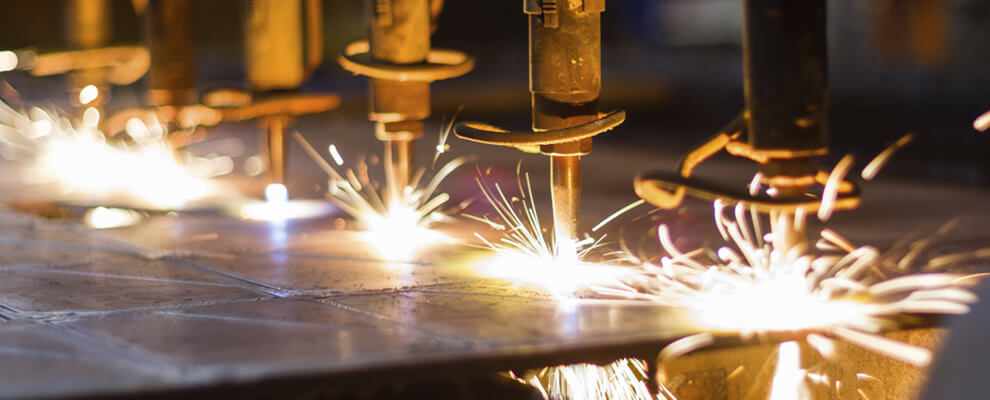The aerospace industry is consistently at the forefront of materials science. Aerospace manufacturing companies must be constantly ready to adopt new materials and produce them to satisfy the demands of major players in the industry. What are some of the new types of materials that we can expect to find in upcoming aircraft? Consider a few emerging materials and some examples of their applications.

Unique Materials Used in Aerospace Manufacturing
Lightweight Materials Continue to Dominate the Market
Weight is the adversary of the entire aerospace industry. Each kilogram of added weight means more fuel required for takeoff and travel, and more fuel means even more weight, resulting in a vicious cycle. Naturally, lightweight metals like aluminum have dominated the aerospace industry as a result. Recently, carbon fiber has gradually taken a greater role, making up about 50% of the body of the Boeing 787 Dreamliner, for example.
However, carbon fiber composites were only the start of a boom in the composite industry. Today there are several composites in development with the potential to provide durability and resilience while shedding weight. While they are not all entirely new, modern manufacturing processes have made them cost-effective to the point of being viable in many aerospace designs.
Silicon-Carbide Fiber Composites
Although this material was first developed back in the 70s, it’s seen a surge in recent years as the cost of producing these composites has dropped. Silicon-carbide fiber composites retain many of the benefits of carbon fiber composites, namely that they can be made into nearly any shape and are very lightweight. However, the silicon component adds impressive heat resistance when coupled with a ceramic matrix. In addition, these materials are extremely durable and NASA has already put this material to the test in unmanned aerial vehicles and has found it to be able to handle even the harshest operating conditions without failure.
Their Cleveland facility is working to bring it to commercial aviation as well. In fact, NASA even allows other companies to license their materials for use in their own products, and provides training and expertise to companies wishing to do so.
New Material Creation Processes Have Potentially Revolutionary Applications
The way a material is made is just as important as its composition. The aerospace manufacturing industry is starting to transition to new production methods that have the potential to produce much better versions of existing compounds. Most traditional methods use subtractive processes which remove material in order to create a part. CNC milling, for example, is one of the most common methods used today. However, additive processes are rapidly growing in popularity.
Powder metallurgy processes essentially allow for 3D printing complex metal parts. The European Union has put together a research team and pooled funding to continue to explore these techniques and produce new compositions using additive manufacturing. Aerospace suppliers in the Middle East should keep an eye on these initiatives, as they may be able to produce components using these new methods in a market where major players like Airbus operate.
NASA Alloy GRX-810
A great example of this new approach to manufacturing leading to a new type of material is this new alloy made by NASA. GRX-810 is made using a 3D printing process. It can apply nanoscale layers of oxides using a technique called oxide dispersion strengthening (ODS). Unlike subtractive processes, which can introduce stresses into the final component that make it weaker, GRX-810 is significantly stronger.
In fact, this material can be 1000 times stronger than its counterparts at temperatures over 1000 degrees Celsius, which makes it ideal for engine applications where temperatures frequently run high. It also has double the resistance to fractures and more than three times the pliability before breaking. NASA used thermodynamic modeling, which is a very modern tool that aerospace manufacturing companies should look to implement as part of a digital transformation.
Shape Memory Alloys Provide Alternatives to Hydraulics
If an aircraft wants to change its profile and flight characteristics, it has to reposition its components. We see this manifested in the form of flaps on the wings of a commercial airliner, for example. However, delivering the force needed to produce that motion comes at a cost. Hydraulic systems add significant weight to aircraft and are a potential point of failure. Shape Memory Alloys (SMAs) are being developed and could potentially replace some hydraulic systems entirely.
When the right combination of metals is used, an SMA can be made. Nickel and titanium (Ni-TI) alloys are currently the most popular. When heated to a certain temperature, SMAs can deform. However, this deformation is not permanent; when the alloy’s temperature drops back below a certain threshold, it will resume its previous shape. SMA actuators can now be used to manipulate parts in much the same way a standard hydraulic actuator does.
Boeing’s SMA Chevrons
Boeing’s latest engines feature chevrons around the exhaust, which reduce noise during takeoff and landing. However, what makes these chevrons particularly interesting is that they use SMAs. Heating elements installed in the nacelle allow the plane to activate the SMAs, which bend inwards during takeoff and landing to reduce noise. They straighten at cruising altitude to maximize airflow and reduce drag.
Upgrading Your Manufacturing Potential
The aerospace industry is continuously exploring new materials and new methods of material manufacturing. If your business doesn’t implement the latest production methods, you could quickly fall behind the competition. However, manufacturing parts with these advanced materials requires a complete digital transformation.
Contact SAAB RDS to learn how we can upgrade your company’s digital infrastructure to enable production of the materials that future aircraft will depend on.
